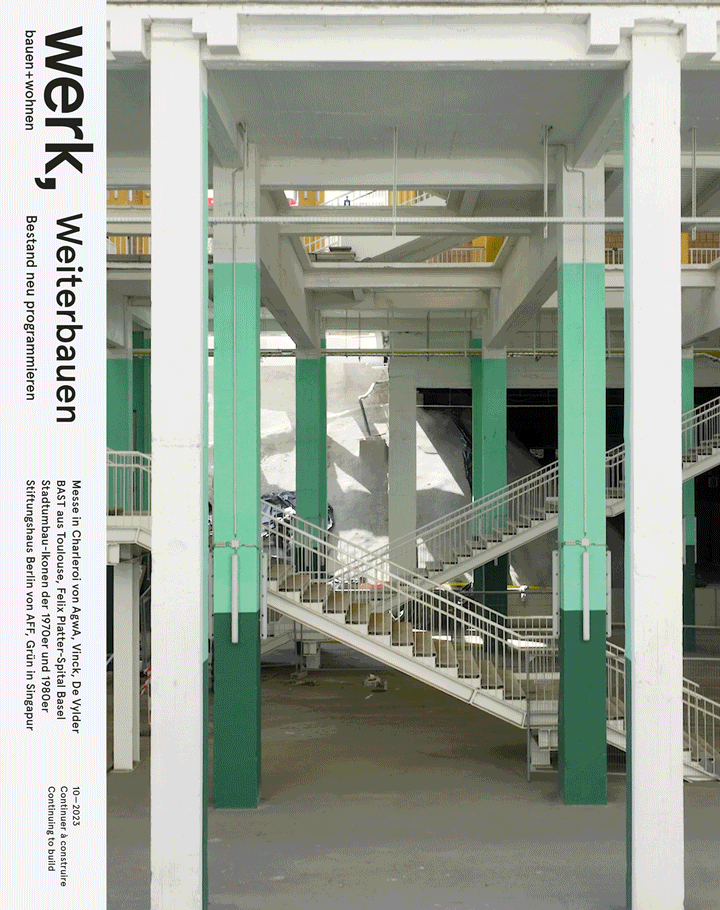werk, bauen + wohnen 10–2023

…, and think about the city
Our age is not the only one to discover the value of existing building stock for architecture. As early as the 1970s the change of paradigms in the architecture discourse made continuing to build the city a decisive theme. Unlike back then, today climate change and, associated with it, the wastage of resources and CO₂ consumption of new buildings as well as increased internal density are important social motors for addressing and reinterpreting existing structures. The showplaces, too, have changed: continuing to build in the suburban context releases enormous potential, but confronts planners with completely new kinds of challenges. Only rarely are these places of historical interest, they are shaped more by fragmentation, rapid growth, urban design apathy and the large scale. Thus, if we are to create worthwhile places to live in, urban repair and continuing to build acquire a fundamental importance as a commission.
Continuing a building also includes caring about what already exists, not just on account of its material qualities but also its conceptual values. The issue is more the transformative aspect, relating, redesigning, making something that is useful for our time and — so the honourable but yet uncertain goal — also for the future. Whether in small French towns, the west of Basel or the Belgian town of Charleroi — the showplaces of continuing to build existing physical and social structures are manifold, essentially complex, and therefore standardized recipes cannot be used. The need is for appropriate, perhaps also experimental planning processes, which can integrate the different protagonists and interests; genuinely continuing to build the city can only succeed as a democratic inclusive process.
Architects should approach this with a substantial portion of curiosity, openness, and delight in experimentation. In addition, there is also the question about an implementation that offers spatial qualities which work by them- selves, but also as part of a larger whole. In this regard there are probably some people who recall Luigi Snozzi’s advice: “build a path, a house, a district, and then think about the city.” — Lucia Gratz, Jenny Keller